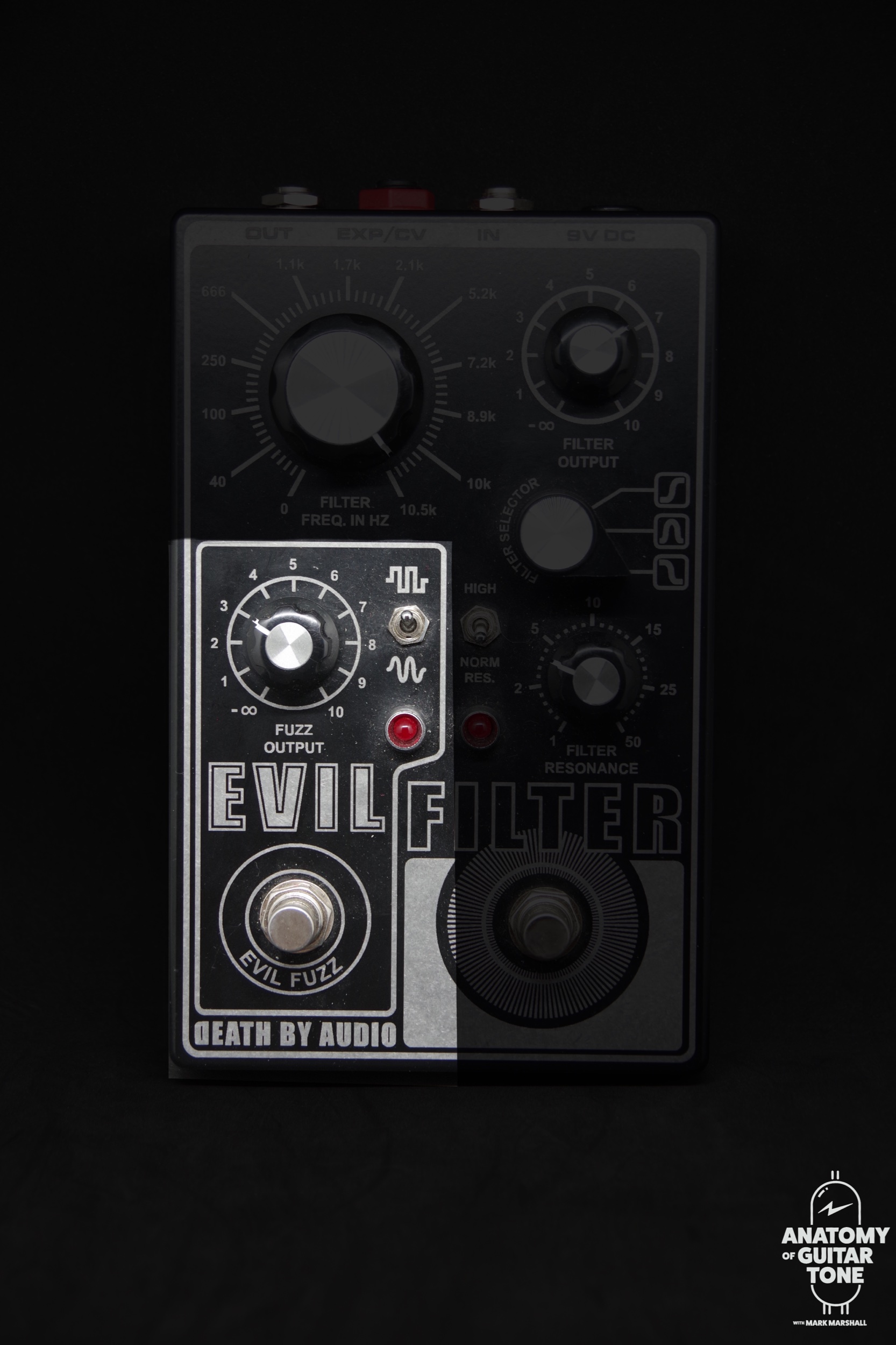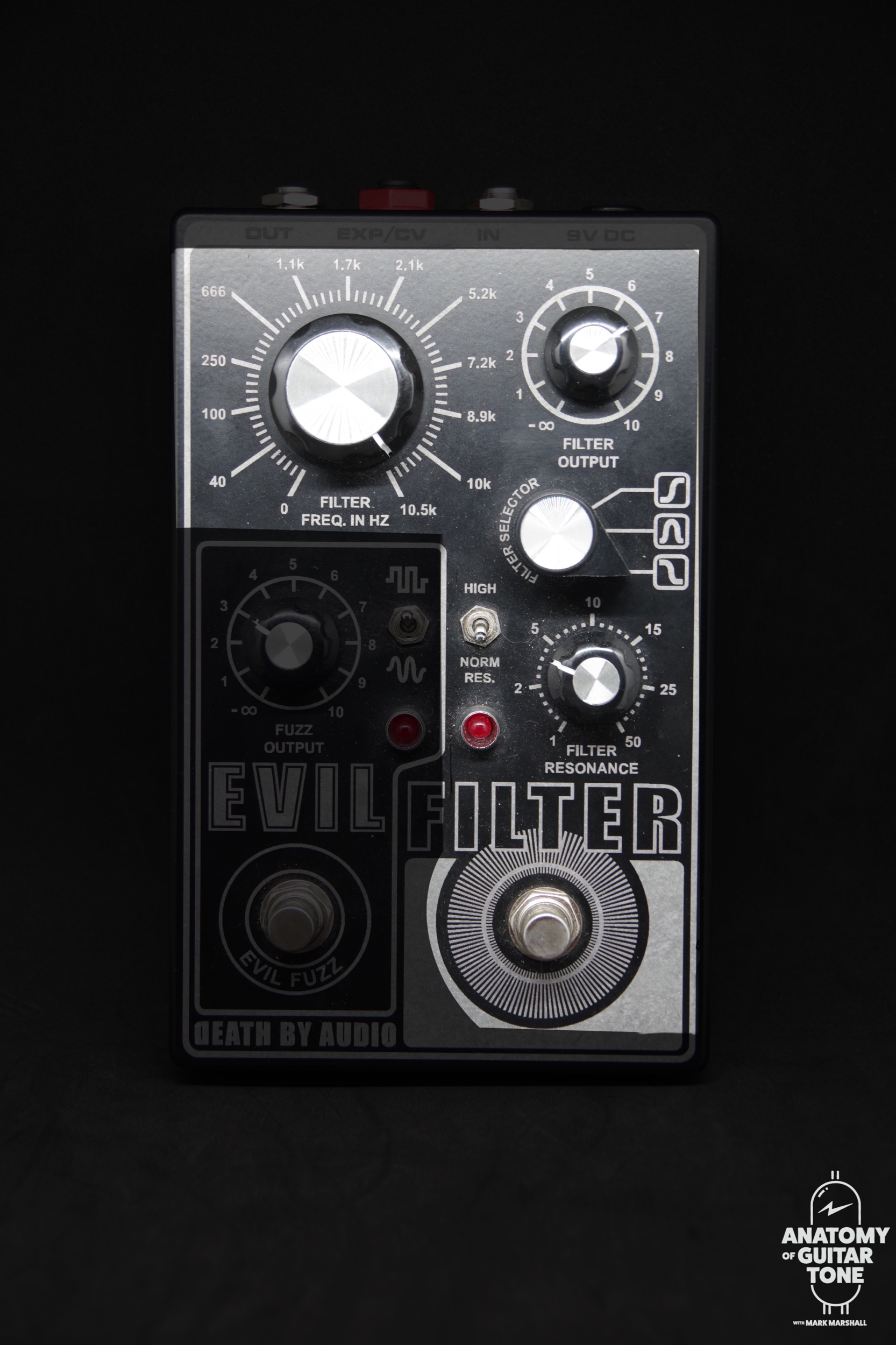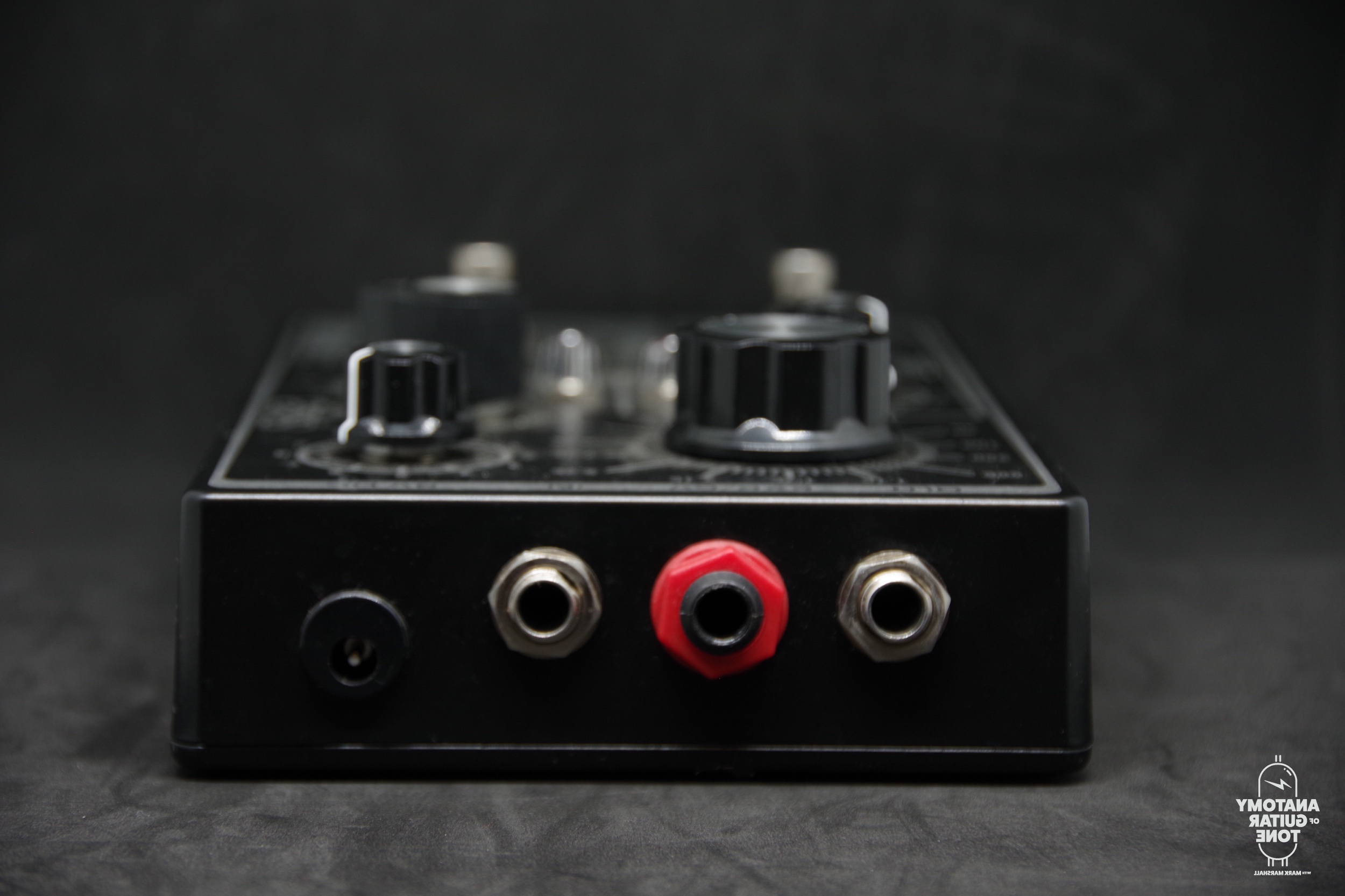Death By Audio Pedals Evil Filter
Over the last year I’ve been looking for pedals that carve their own path. I have no problem with traditional effects. I own and adore a lot of them. However, I’ve been scoring music a lot for tv and film and I’ve been creating sounds less then typical.
You can get unordinary sounds from classic pedals if you try hard enough. But, sometimes you really want to venture out into the borough of weird.
This led me to Death By Audio pedals. They have been making non conventional pedals for quite some time now. Seemed like a great place to start my exploitation of the odd.
My first attraction to them was the Evil Filter. First off, it’s an interesting two in one pedal. It has a filter and a fuzz. Each could be used independently or in conjunction.
The filter section of the evil filter is quite amazing. This isn’t a pedal where DBA smooshed two effects together for convenience. These are two effects that pair perfectly well together.
I would say it’s the best filter I’ve ever used. It’s not only flexible, but hard to make sound bad. You can also hook up an expression pedal for further real time control of the filter.
Fuzz Me
The fuzz circuit (Evil Fuzz) in the Death by Audio pedals Evil Filter is its own thing. It’s a fuzz unlike one you’ve heard before. One of the settings allows the fuzz to bloom as notes ring out. This is super cool crazy fuzz pedal.
Even though the fuzz can seem a little out of control, it’s really not. It’s controlled madness. Which actually makes it cool for songwriter gigs. You can create melodic, soaring solos with it.
This is something that tends to be a challenge with something like the ZVez fuzz factory. I love the fuzz factory. But, it’s hard to control in delicate situations. The evil filter fuzz can be controlled but not sound subdued. That’s pretty impressive!
Bass and Baritone
What’s great about the Evil Filter is it responds so well to other stringed instruments as well. Bass and baritone guitar also sound wild through this pedal. There are a lot of ways you can manipulate sound. I sometimes like to use it on the send return of my Apollo via a reamp box. That way I can process a portion of the guitar signal and blend it in to taste.
It’s also fun to apply the Evil Filter to guitar reverb sends. You can get creative this pedal.
Megaphone Effect
Some might ask why would you even need a filter. There have been gigs where I needed to create the sound of the guitar coming through a tiny speaker or megaphone. This is a common effect mixers will use in the intro or the bridge of a song.
I don’t find all filters to be musical. Sometimes they sounds plasticky and thin. The filter section on theEvil Filter is rather large sounding. It has a lot of guts. There is a very analog quality to it. That’s probably because it is analog!
Size of the Pedal
The evil filter isn’t the smallest pedal. It def takes up some real estate on your pedalboard. The reason it’s so big is it’s meant to be played. The intent was for you to reach down and twiddle those knobs. This would be hard to do on a super compact pedal.
They made it enjoyable to tweak. I’ve had some pedals that have a lot of tweak-able parameters only to be frustrating adjusting them as the knobs were small.
Due to the size you have to make a commitment to the pedal. It’s not the type of pedal you’re gonna squeeze in the corner of your board and forget about. It’s going to stare you in the face until you engage.
What else does a filter do?
High Pass Filter and Low Pass Filter
One of my fav uses of a filter is for adjusting space. Depending on how you filter frequencies (low pass filter or high pass filter), it can make you feel like it’s coming for near or far. From above or below. From the air or from the depths of the ocean.
Often people only think about space being reverb and panning. But eq can very much imply space.
Treble can move things forward and bass can move things backwards. This is a trick that some of the best mixing engineers know.
This is a tool not enough guitarists take advantage of in live situations. We tend to just focus on being forward. But, pushing our sound backward can be a really cool effect. This is sometimes why guitarists choose the bridge or neck pickup.
Some gigs allow for this spacial tweaking more then others. But, assuming you’re in a good listening environment, you can really play with the EQ directionality of tone.
Ever thought bout having two OD pedals on your board not just for gain, but for a bright/dark option?
This can be a handy trick for when you need your guitar to pop out more or push back more. We can also use our trusty Death by Audio pedals Evil Filter for this as well.
Top view of the Death by Audio Evil Filter
Audio Examples
All recordings made with n AEA A 840 ribbon mic into a UAD Apollo. Reverb when added was the UAD Capitol Chambers. The guitar was a 1991 American Standard Stratocaster with FSC ‘59 pickups.









